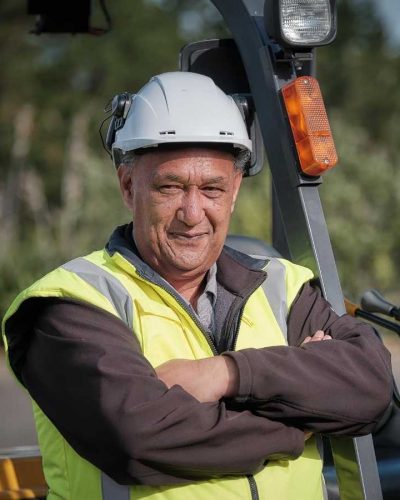Telehandler
The telehandler is categorised into two types, non-slewing or slewing fitted with or without stabilisers. This course covers the safe operation of a telehandler by undertaking pre operational checks, hazard identification, wearing correct PPE, communicating and parking and shutting down a telehandler.
Certification
Unit Standard 23637 will be awarded to students who achieve in both theory and practical componentsStandard: 23637 L3 C20 V5
Course Content
The course focuses on:
- Health and safety legislative requirements
- Telehandler and attachment types and parameters
- Preparing and operating a telehandler
- Fault reporting.
- Risk assessing of site hazards.
- Pre-operational inspections.
- Maneuvering a telehandler safely.
- Stacking, de-stacking and moving loads.
- Use of warning devices and signals fitted.
- Safety requirements while completing operations.
Learning Outcomes
At the end of this course, students will be able to:
- Describe the operation of telehandlers.
- Prepare for telehandler operations.
- Operate a telehandler on a worksite.
- Complete post-operational procedures for a telehandler.
Course structure
The course is a combination of theoretical and practical training and assessment.
Course Prerequisites
Prerequisites Class of driver licence and endorsements required for the
vehicle being driven.
Assessment process
Theory assessment with appropriate company documents*; verification form followed by observed practical assessment.
*We recommend students bring completed check sheet; job sheet; hazard ID sheet or JSA/JHA from their workplace relating to a telehandler operation.
Assessment involves operating a telehandler with fork attachment. (most commonly used attachment).
If an alternative attachment is required, please contact Wood Training in advance. Note: For any other attachment a W Endorsement applies.
Revalidation/Refresher
To maintain current competency, it is recommended that refresher training occurs regularly. Depending on the industry you work in this may vary. Current Wood Training recommendation is every three years.
Items to bring
- Photo ID.
- Covered-in safety footwear.
- Comfortable clothing suitable for classroom situation.
Required equipment
- Certified Telehandler which has appropriate certification.
- Fork attachment which has appropriate certification (certification is required for all attachments)
- PPE (toe capped safety boots and high visibility vest) must be worn for the practical session
Special Notes
This unit standard does not meet the requirements for the Approved Code of Practice for “Cranes”, Part 4: Requirements for persons operating or working with cranes, page 47.
Course Length
1 Day
Location
Client Premises
Price
$405 + GST per person
Group rates available
Book Now
Book instantly online
Meet The Trainers

Bob Korewha
Bob Korewha
There isn’t much that Bob can’t drive or operate. Bob is a MITO, and Connexis registered assessor, a Competenz registered Forklift Trainer and an NZTA approved assessor. Bob started his career as a Driver/Operator within the Transport and Building Industries and has spent the last 20 years training people on safe driving and operating equipment. He believes in giving the right information to the candidate so that they can make the right decisions out there in the workplace, that teaching the safe use of heavy machinery includes a strong approach to forming a safety culture at their workplace so that the operator goes home safe every day.


